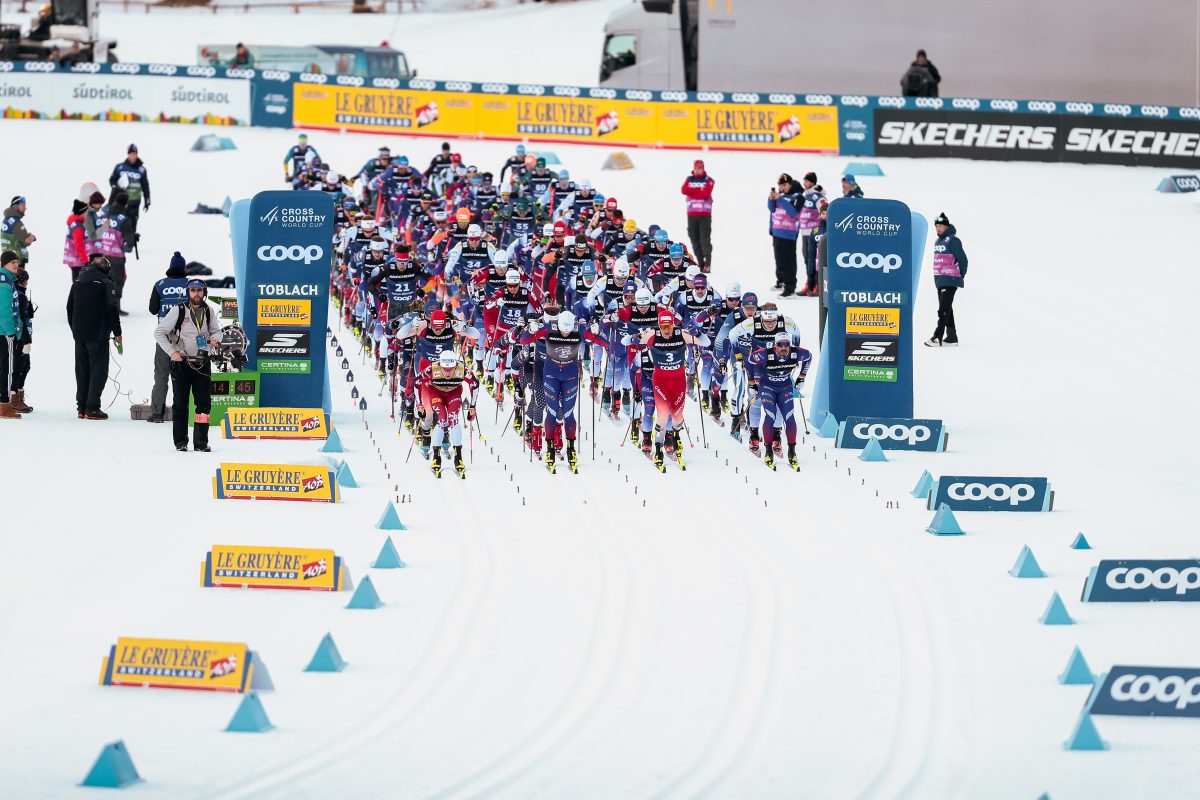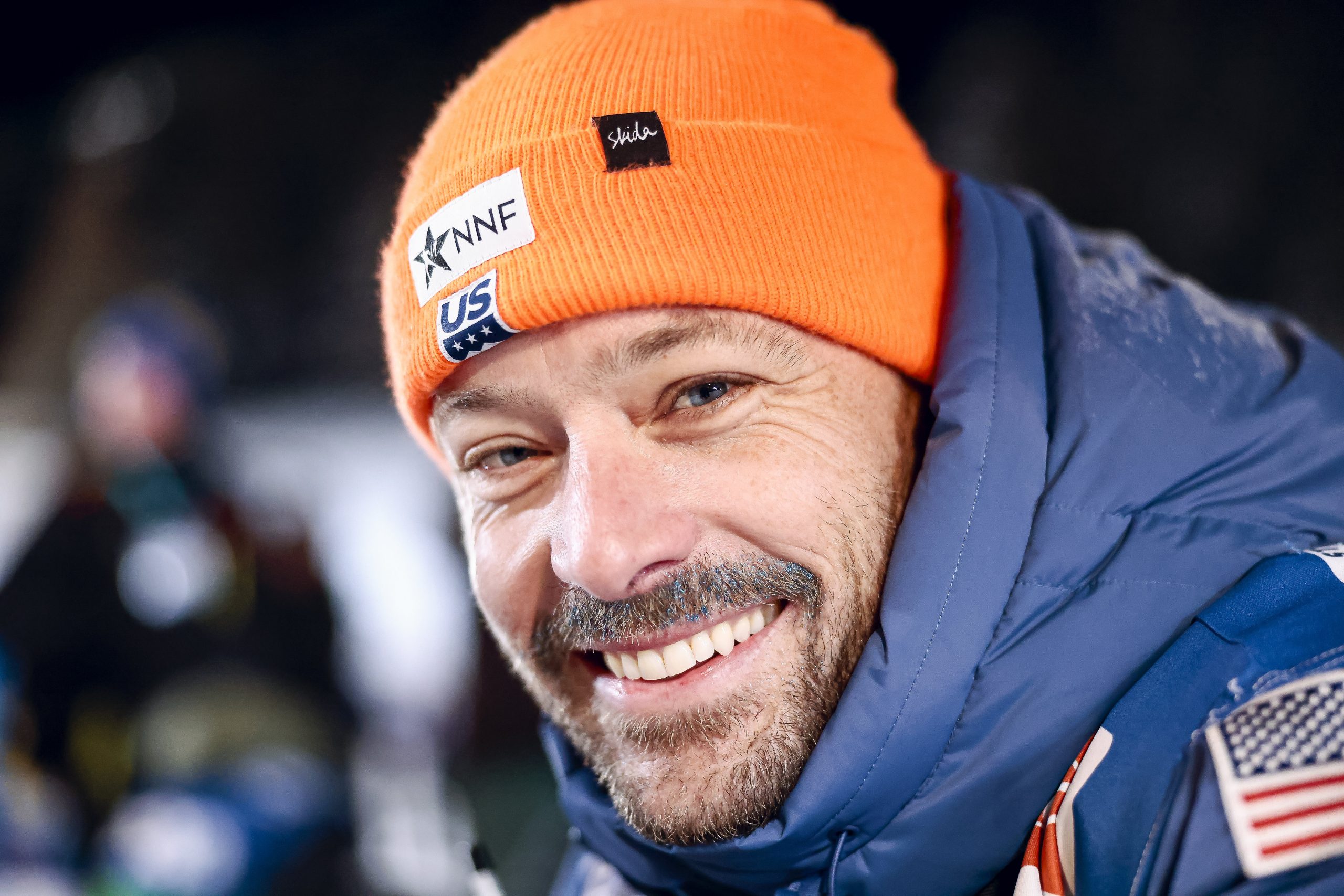
Watching the Stifel U.S. Ski Team during the first half of the 2023-24 World Cup season has, at points, been a sublime experience. That feeling of overwhelming exhilaration when looking out from the mountain top has been something literal for American athletes on top of podiums—and literal Alpes too—as they’ve traveled week-to-week, race-to-race, across Europe this winter. From Jessie Diggins’ Overall World Cup lead and Tour de Ski win, to career firsts way into her career for Rosie Brennan, and a generation of young American men coming of age as they’ve stormed to their first podiums, sprint finals, and more, there’s been one evident truth: where the Americans have gone this year, they’ve gone together.
That “team-first” philosophy is a complex idea that may be easier to feel than to understand, but if anyone can come close to providing a definition, it’s Head Coach, Matt Whitcomb. Whitcomb has been a fixture on the World Cup for Team USA for over a decade, and in his current role as Head Coach since 2020. His tenure has seen transformative athletes, but more than that, as he stresses, a transformation in how the US ski community looks at itself. “I don’t think the [performance boost in US Skiing over the last decade] is because of one or two athletes, or one or two club,” Whitcomb said. “I think the difference is that our secret weapon as a nation is that we work together.” He prefers to view things holistically in order to understand the whole of the success he and the team he now leads has had.
For Whitcomb, the chance to show off the holistic system that powers US skiing is just a month away: the Loppet Cup, Minneapolis’ World Cup, Feb 17-19. This represents not only the first time American World Cup competitors have had a home race in 20 years, but also one massive homecoming for those athletes in front of the American ski-community that supports them everyday. Whitcomb confirmed that the Stifel U.S. Ski Team is really that excited about bringing it all back home. “It feels like we’re hosting our own little Olympics,” he said.”
FasterSkier caught up with him during his team’s post-Tour retreat in Livigno, Italy. In a Question and Answer session, Whitcomb recapped his feelings on the US Team’s early-season World Cup success, and discussed the ways that the Minneapolis World Cups could provide a springboard for the future of American Skiing. He also delved into his other big role in US Skiing: bolstering the ski community’s sport development as part of the National Nordic Foundation, and the opportunity for American skiing fans to show their support for the organization through a World Cup Fan Bib fundraiser in Minneapolis.
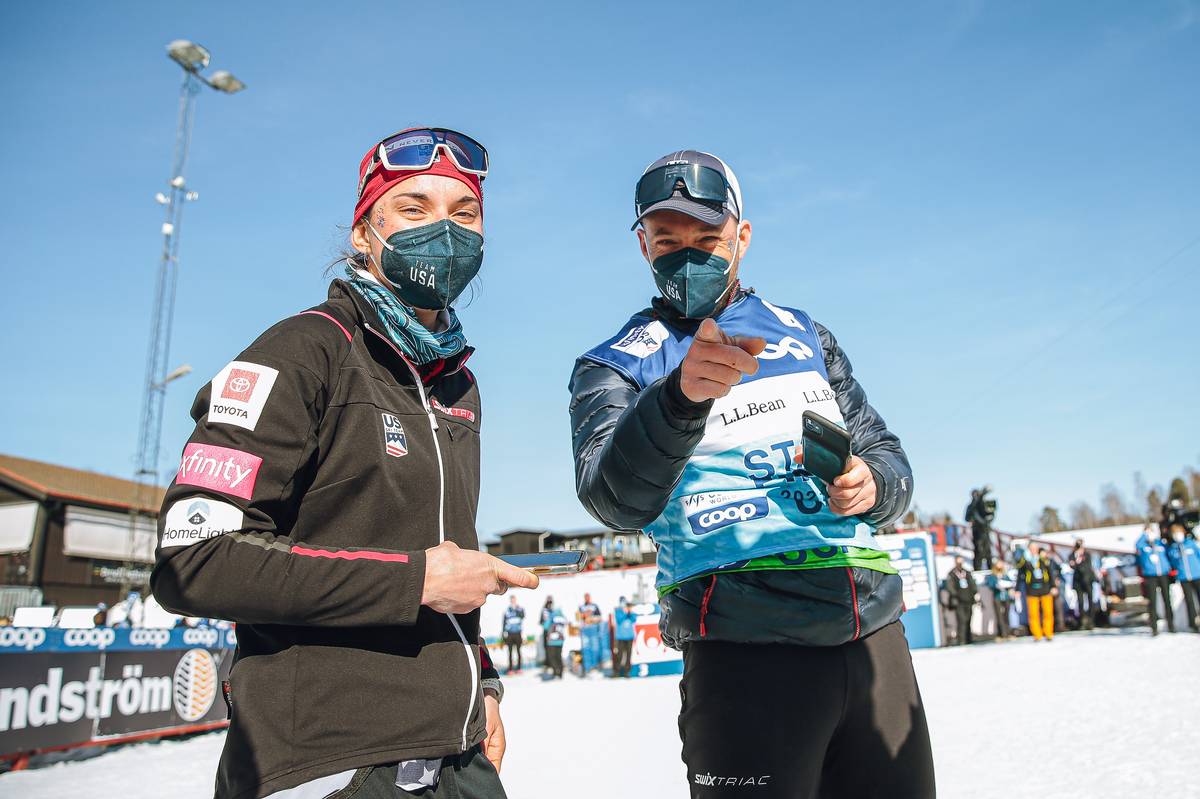
FasterSkier (FS): What’s the report from the US camp in Italy after the Tour de Ski? How’s the skiing? How’s everyone feeling?
Matt Whitcomb (MW): Extra Blue. That probably describes it best! We place a high value on building a post Tour de Ski recovery camp option for athletes and staff that includes a lot of living space, mellow trails, and great food cooked by one of our chefs. Most other teams go home and get this naturally, and we know our typical hotel room and buffet is inadequate when it comes to Tour de Ski recovery. We need a mid-season uplift, and this is it. The house we have in Livigno, Italy allows us to live like a family, and experience a lot of the values one would find at home. All this is to say that recovery has gone well, and we’ve resumed training carefully. I should note, too, that as we recover after the Tour, we often try to sneak in a bit of altitude. Livigno is at 6,100ft (1859m). I know it seems like sea-level would be the smarter choice, but we’ve found that this additional commitment to altitude living pays dividends in Period 3 and 4.
The Season Thus Far
FS: Success is subjective, but this season has certainly felt like a very successful one for American skiers. From your place in the middle it all, does that ring true?
MW: If we have 15 athletes on the road and only one of them is winning the Olympics or the Tour de Ski or the World Cup Overall, we are not successful. There is no chance for legacy when only one person succeeds. Look at post-Justyna Kowalczyk Poland; she won it all, and then retired and left a hole that was exactly as large as the sum of her accomplishments. A team is successful when it is no longer defined by its one or two star athletes. We have depth now, and that’s what creates hard-to-stop momentum. That’s why Ben gets his first podium not long after JC’s first podium. Then Gus gets fourth, three days later. The success of many athletes creates a vibe—a wind—and we get swept up in it. Zoom out a bit. How do we get the professional athletes and young kids back home swept up in that vibe? It doesn’t happen if we have a few jerks and prima donnas succeeding on the World Cup. We need our team to consist of tangible, accessible, inspirational role models, who create a powerful draft that the next level can slip into. I think that’s how it works. I think that’s why it’s working.
FS: A lot of American athletes this season have hit milestones that they’ve had trajectories towards, and worked for, for years – first podiums, first World Cup victories etc…Curious about the means to those ends. What characteristics can you point to that have allowed this Team to reach the results it has this season?
MW: We can have the best talent in the world come through our team, but if they quit before age 23, like most American skiers do, we’ll never know how good they could’ve been at the World Cup level. We try to create a positive team environment for one reason: we need our athletes and staff to enjoy longer careers.
Look at the women’s team of 2012-2018. We strived for a great team environment, and consequently, to name a few, you saw Kikkan [Randall], Holly [Brooks], Liz [Stephen], Ida [Sargent], Sophie [Caldwell-Hamilton] , and Sadie [Bjornsen] all ski into their 30’s, each retiring with World Cup podiums. Jessie [Diggins] and Rosie [Brennan], who are ranked first and third in the world, are in their 30’s. None of this history is written if we don’t build and maintain a great team environment. This will always be my number one focus, and I will say, it’s a very difficult target—especially for Americans—to hit, given how up in each other’s space we are for so many months in a row. Even at our best, this goal will always be a struggle, and it will always be our answer.
FS: You’ve said in the past that “[nordic skiing] is becoming a team sport.” Are there any particular moments over the past month and a half of racing where that core belief in each other really shone through?
MW: We made a goal this year as a team: stop taking podiums for granted. This year, you see us storm the podium and take a team photo with the one athlete who actually earned the award. No one of us is as strong as all of us, and that’s what we are celebrating. If you see that photo, that’s the message we are trying to send to you. We are recruiting you.
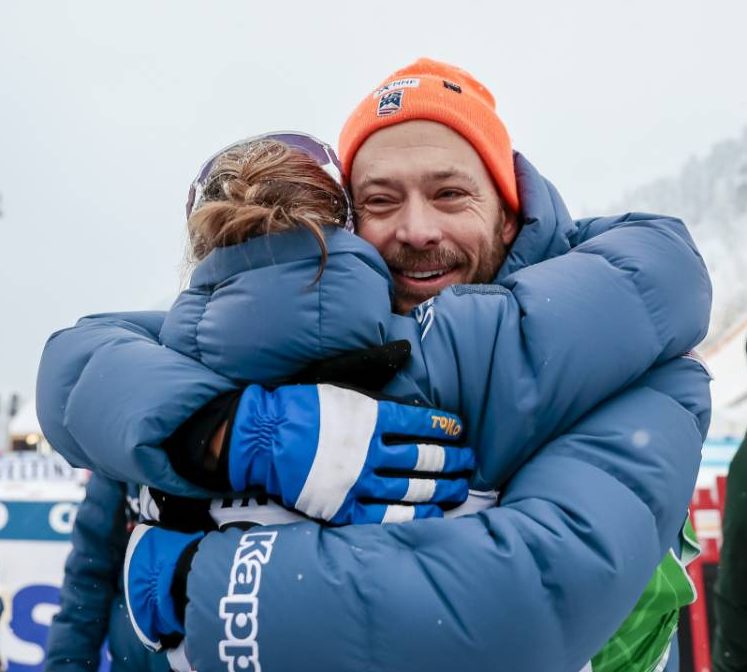
World Cup Period 3, and the Future of US Skiing
FS: How are you and the Team feeling now that the North American World Cups are really starting to come into view?
MW: It feels like we are hosting our own little Olympics. This is our chance for the U.S. ski community to show off what we have built together. It’s our chance to recruit kids to our sport. Look at the recruiting advantage Norway has; in just this World Cup season alone, they get to ski in front of their fans in Trondheim, Drammen, and Oslo, followed next season by World Championships, and several World Cups. Of course their kids grow up wanting to be skiers. We are about to see this benefit to our nation for the first time in a quarter of a century. And yet, we are succeeding anyway. Just imagine; this success we are experiencing now, if we continue to work together as a skiing nation, is just the beginning.
FS: What are you most looking forward to about having the US ski community in one place?
MW: We can write about and tout our strength as a nation, but it’s a different thing to looking being able to really feel it. I want to stand along the course and see and hear what 10,000 people—including my family—who surround that race course in support of our team really feels like.
FS: There’s probably very few Americans that know more about what a World Cup “atmosphere” looks like than you. What kinds of things are you looking forward to seeing brought over from the World Cup circuit to North America for these World Cups?
MW: Our European competitors are very excited to come race in the United States. They’ve heard it’s going to be huge. These days, the whole world is being affected by the onslaught of indoor culture. Even in Europe, it’s hard to get people outdoors to watch a live cross country event when they can watch it instead on their phones and TV’s. You don’t have to look farther than Trondheim, with a population of over 200,000 people. It’s the hometown of Johannes, and yet the crowds were disappointing. This is what Minneapolis will bring: a culture that doesn’t take the World Cup circuit coming to its doorstep for granted.
I’m also very excited about a project we have going on with the National Nordic Foundation (NNF) (note: Whitcomb serves on the NNF Board of Directors) which is to put as many American skier fan bibs on our spectators as is possible. I want to look out at the crowd and see our stars and stripes on hundreds of people, and on others, the smiling faces of our athletes. This is a cool project that was pitched to us by one of our friends, Oumar Cherif, who’s an avid skier in the Minneapolis area and involved with the Loppet Cup. I believe it was a creation by he and his girlfriend, with the idea of celebrating our strength as a nation by uniting us with fan bibs. Oumar reached out to the National Nordic Foundation and pitched the idea, and said he thought it could be a successful fundraiser. I think he was right. We have a variety of designs being produced by local Midwestern companies Borah Teamwear and Podiumwear. They’ve each cut us a great deal, and I think we’re offering a lot of fun and loud options for our fans.
The big thing to highlight is that this is a real way to see skier development works in the US. At Minneapolis, any skier that qualifies for a World Cup start, who is not already fully funded by the US Ski Team, is receiving funding. That’s championing competitive equity in our ski community, and it’s possible because of our ski community and what they give to NNF.
FS: With this being the first World Cup in America in over 20 years, there’s a unique circumstance where a veteran group of American skiers—Jessie Diggins, Rosie Brennan, etc.—will be getting the same experience as a younger group of skiers that grew up watching them race: racing in front of a home crowd for the first time. Having now gotten to observe the sweep of a couple of generations of American skiers building off the successes of the ones before them, what are your thoughts on getting to see that cross-over happen at these North American World Cups?
MW: That’s a great question. We’ll have Olympic and World Championship medalists—athletes with over 100 World Cup starts—as well as first-time starters on the World Cup, all toeing the line on the same day. I think this shared enthusiasm will be uniting. I can’t wait to see it.
FS: You spoke briefly about NNF, which you’re involved in as a Board Member. How does that organization play a role in something like the Minneapolis World Cup?
I have two jobs that fit together a bit like puzzle pieces. As the head coach for the U.S. Ski Team, I get to help coach the top level of racing in the U.S. And it’s well-supported. U.S. Ski & Snowboard fully funds camp and racing expenses for any athlete who qualifies for the A or B teams. But that funding falls away steeply between the B and D team (we have no C team), and that’s where NNF begins its financial support. That support starts with these World Cups, and includes U-23 and World Junior Championships, summer athlete training grants, OPA winter race trips, the U-18 winter race trip, REG and National U-16 camps, SuperTour title sponsor funding, and the Trail to Gold coaching grant program.
We disburse nearly $250,000 per year into American skiing, with the goal of reducing the number of developing skiers who leave the sport because of funding stress. We are a fundraising organization that powers the opportunities that lead to World Cup and Olympic excellence for cross country skiers from the United States. Our philosophy is special. We won’t fully-fund a project for an athlete, but will instead team up with that athlete, their family, and their club, to make it affordable.
FS: So something like the World Cup Fan Bibs is a way to lay a foundation to empower future skiers while the ones that inspire them in the sport are out chasing success today?
Exactly. These fan bibs should improve our brand recognition for the future, and for now, they will help pay for the NNF’s Pillar Projects. The big hope, however, is that people will see these bibs, or read this interview, and will become an NNF supporter. We need help. Our board works very hard, and our community is responsive to our needs, but we want to expand! For three years, we’ve raised $500,000 per year, and we have aspirations to increase that to $1,000,000, as we work towards endowing our Pillar Projects.
FS: With a nod towards the future, what makes you excited about American skiing in the near-term this season, and what makes you excited as you look way beyond it?
MW: In the near-term, pretty simple: Minneapolis. It really is that exciting for us all to be coming home. I can’t stress the idea of using this opportunity to literally turn the ski world more towards North America. Create the atmosphere that shows everyone that we’re excited—that we’ve always been excited—about World Cup skiing. Buy a fan bib, come cheer, give everything!
For Minneapolis to have long-term impact, what must happen is that our next American World Cup venue is inspired to host. We have to have the World Cup come back to the U.S. We need the desire from that next venue to be loud, and urgent. We can’t wait even another five years. Minneapolis again? Great. Lake Placid? Alaska? Soldier Hollow? Central Park? All just great!
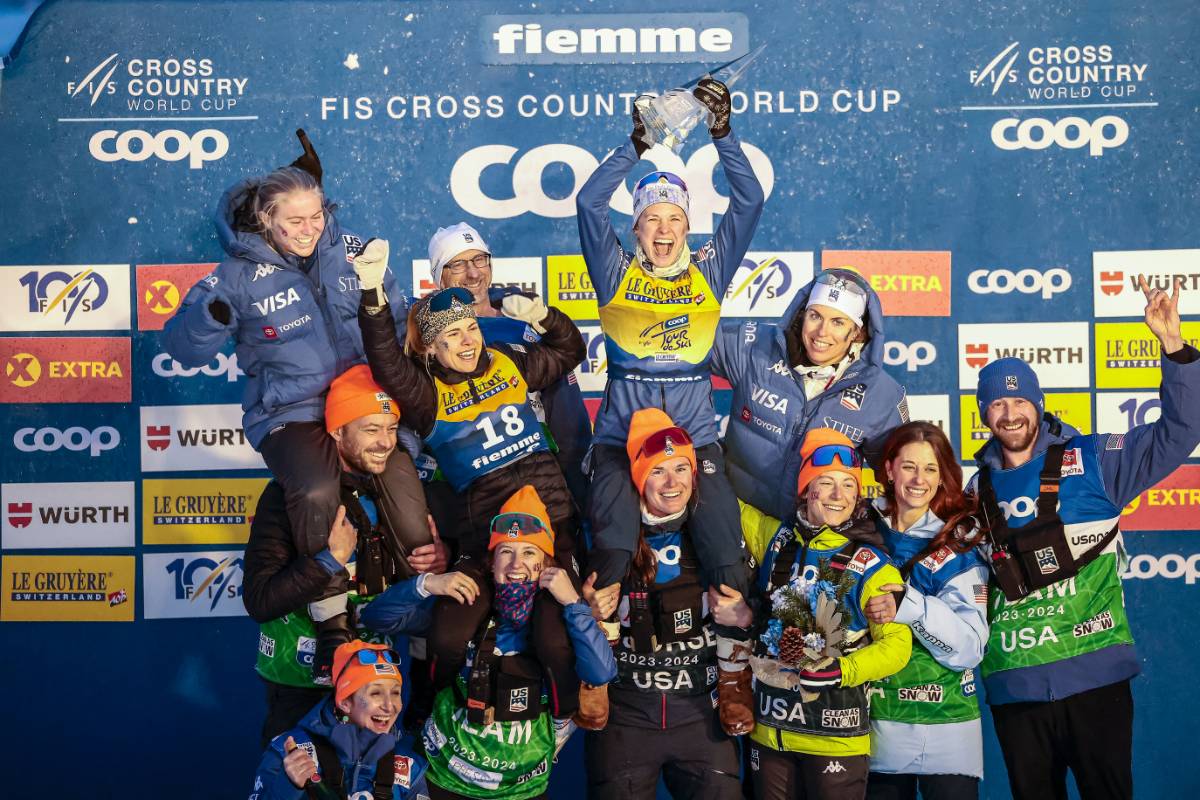
Ben Theyerl
Ben Theyerl was born into a family now three-generations into nordic ski racing in the US. He grew up skiing for Chippewa Valley Nordic in his native Eau Claire, Wisconsin, before spending four years racing for Colby College in Maine. He currently mixes writing and skiing while based out of Crested Butte, CO, where he coaches the best group of high schoolers one could hope to find.



